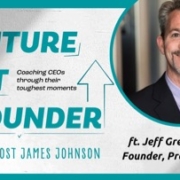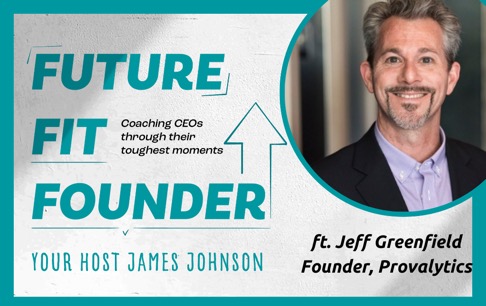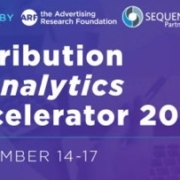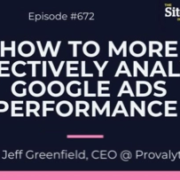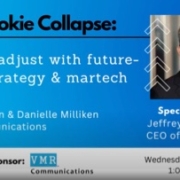Maximize your return on investment with Provalytics’ expert Tips on Effective Google Ads Performance Analysis. Learn how to analyze data, identify trends and make data-driven decisions to drive success for your business.
In this episode, we’re joined by Jeff Greenfield, founder of Provalytics. Jeff joins us to share his thoughts on how marketers can more effectively measure Google Ads performance. In the episode we discuss:
- What really is forecasting in marketing?
- Why do you need to look outside of Google Ads to find the data you need to produce better advertising?
- Is the AIDA marketing model still relevant?
- What is incrementality?
- The importance of upper-funnel marketing
Scott Colenut
Hello and welcome to the Internet Marketing Podcast, brought to you by Site Visibility. I’m your host Scott Colnutt. And with me today is Jeff Greenfield, CEO at Provalytics, and we are gonna be discussing how to more effectively analyze Google ads performance. Welcome to the podcast, Jeff.
Jeff Greenfield
Thank you so much, Scott. It’s a real pleasure to be here today.
Scott Colenut
Would you mind taking a moment to introduce yourself to me and our listeners describing a little bit more about what you do at Provalytics?
Jeff Greenfield
Yeah, Provalytics and the reason it’s Provalytics is because it’s about proof and ‘prova’ is an Italian word for proof. And one of the things that has been lacking since the beginning of the digital era in terms of for marketers for planning is to figure out what is actually gonna work. It’s very easy to look back and say, okay, this worked in the past, is it gonna continue to work? But what Provalytics goes really full, full forward on is this concept of forecasting and people understand forecasting, because you know it for the weather, for earthquakes and things like that. And forecasting is never exact, but it’s pretty close. And that’s what this is all about, is being able to see, if you do this, you would’ve gotten this, and then you go and do that, and then it turns out you actually got that. That’s what Provalytics is all about.
Scott Colenut
It’s interesting about forecasting and marketing particularly because in my experience, I find that the description of forecasting is used interchangeably between people. Some people when they talk about forecasting, they’re talking about science and data backed forecasting, and some people use forecasting as a word to describe a best guess scenario. Do you find that there’s some confusion just with what forecasting actually is?
Jeff Greenfield
Yes, but both of those different sides are both accurate because what’s important here is that when we’re talking about forecasting a marketing response, uh, we don’t actually know because we can’t. And even back in my early days of my career with C3 metrics, when we were able to collect deterministically every single digital touchpoint, we still don’t know what was inside the person’s head before they saw that first ad. So we still don’t understand, we know how humans react advertising, but we, we can’t look at it from that aspect. So that’s why forecasting is all about the math and the models. And there’s a, a famous saying about models that all models are wrong, some are useful, and the reality is, is that no forecast is going to be a hundred percent or even 90% accurate. But the idea is, is that if it can just give you a little leg up and and point you in the right direction, that’s so much better than what most people are using, which is a best guess.
Now what’s important about this is that your best guess is a marketer because you understand your business better than anyone else. A lot of those assumptions and understandings also need to be brought into a model because there’s seasonality that’s involved with business. There’s trends and there’s also the competitive pressure as well too. So I, I would say that a forecast is a best guess, but it’s a best guess That is utilizing advanced machine learning and in some cases ai so that it’s a guess that would take, let’s say a couple of hundred humans to sit down in a week and come up with the machines and the math can do it in less than an hour.
Scott Colenut
What you’ve just said is music to my ears. I’m sitting here smiling because we talk about this concept, everything you’ve just described in our agency quite a lot. And what I find is that, um, particularly creative marketers can be often fearful of the data aspects of what we’ve just described. And really, as you said, the data is used to guide you. It’s not an exact science and there’s so much other context to overlay and factor into your model. So if you manage to get to the point where you marry data with ambition, experience and all that other context, that’s when the model becomes really, really useful, at least in my experience. Is that similar to you?
Jeff Greenfield
No, you’re absolutely right Scott. And, and sometimes though the model’s results will be somewhat counterintuitive, so you also have to be open to the idea that it may point you in a direction that you think is a waste of time. I’ll give you an example. A brand goes and they advertise, let’s say on the WWE (the wrestling site) during wrestling season because they’re selling something that they think that demographic is really into. So they advertise, they get tons of impressions and you know, they’re in e-commerce and they’re looking and they got zero sales from it, none whatsoever. So, what do they do? It’s, it’s a month long buy, they canceled the buy. All of a sudden, three to four months later sales start coming in out of nowhere or, and, and what it would show up in GA is organically, it would just show up as organic sales.
It came from nowhere. So all of a sudden you’re organic, the number of sales that you can’t attribute to anything starts to increase pretty substantially. Now, back in my days at C3 Metrics, since we were capturing deterministically, not only clicks, but every single impression, we were actually able to see precisely where these individuals found out about the site. And so for a lot of marketers when you say, Hey, you know, that ad buy you canceled three months ago, you need to go back and do more of that because you, your ROI on it is ridiculously high. So you have to be open to understand that the data is there as a guide, but you have to sometimes get out of your own little box a little bit to understand where it’s going to lead you to and, and also to be able to follow it.
And that’s one of the toughest things for folks is that when models give recommendations and they say, this is the best thing that you can do, a lot of marketers say, oh, you know, it makes me feel a little uncomfortable, because I wouldn’t do that on my own. And you know, and I’m here to say that this data and these models are here to make you smarter on their own. They’re not that smart. The only way that they’re really super smart is when you, the marketer take the recommendations and put them into the market and into play.
Scott Colenut
It’s a test of your ambition, your bias, perhaps your ego at times to take all of this in information on board and be open-minded about what they’re telling you with these models. Speaking about getting outside of a box and taking this back to specifically in Google Ads. So I’m assuming that in some way perhaps you find Google Ads analytics may be restrictive and maybe they don’t give you the information that you really need to help form these models on their own. Is that correct? And maybe just talk me through how you reach the conclusion that maybe you need to look outside Google Ads analytics to get this wealth of information that you’re talking about.
Jeff Greenfield
Absolutely, Scott, when you look at Google Analytics, one of the things that’s important is to understand where did it come from? And Google Analytics was originally a company called Urchin. And that’s why the famous UTM codes, you know, UTM source, UTM stands for ‘urchin tracking module‘. Back in the early two thousands, anyone who had a web server, urchin came on there for free. It was an open source platform that Google acquired. And what’s important to understand is that urchin and Google Analytics today is a very good measurement of how people get to your website and what they do on your website. I would argue that there’s others out there that are better, because of the restrictions that are coming into play with GA 4, which we can talk about later. But it, it’s, it’s important to understand that it’s primarily to let you know how did someone get to your website?
Well, Google Analytics and anyone who’s dug into their data will see that the vast majority of traffic that comes to your site comes in either organically or it may come in through brand search. When you’re buying, you’re bidding on your own brand search term if you’re a large enough brand. But what you want to know as a marketer is not necessarily how people click through to your website, but I want to know that big 80 or 90% of organic, how did they find out about me? What is it that brought them to go and search for me? What is it that got them to click on my brand search ad? Because that’s where you should be spending the bulk of your marketing dollars. And because we know that marketing is a funnel. Now there’s a whole argument it’s not a funnel, it’s a circular motion because of social media and there’s a feedback loop.
But I’m a traditional guy, I go with this AIDA model, awareness, interest, desire, and action. And that top of the funnel is very wide at the top. And that’s where you’re throwing out, you’re throwing out food and breadcrumbs because you want to bring people to the top of the funnel. And at that point nobody is searching for you. You’re trying to get to new people who have no idea who you are. Now what’s happened since about 2006 is that folks have been spending money on lower funnel tactics like search. And we’ve seen that large brands have shifted dollars over to where they’re spending about the same amount of money on what we’re calling performance versus branding. And remember, branding is all upper funnel and there’s a great book out there by Orlando Wood, published by the IPA called Lemon, how the Advertising Brain Turned Sour.
Right on the third page, there’s two graphs there. Orlando’s company tracks the effectiveness of ads and they also track ads spend. And what they’ve seen is that as brands have started to build out performance divisions, their funnels are now smaller. And as a result, advertising effectiveness since 2006 has been on a massive decline. And what that means is your ads have to work much harder in order to get the same results they used to get. Now what’s the reason for all this, the reason for all of this is because most marketers are using metrics that only look at clicks and how someone came to their website, they’re not looking at the most important component, which is impressions or reach to see how many people you actually reached. That information doesn’t come into GA.
And GA is great if all you are is marketing on Google. And a couple of years ago that was actually possible, but now the search market is so fragmented because now you’ve got Amazon, you’ve got all the retail search like the Walmarts and the Targets of the world, and you’ve also got all these other platforms whose data doesn’t come into GA, like Facebook, Instagram, Snap. And then you’ve also got things that a lot of marketers are utilizing these days, which is OTT / digitized television. That data doesn’t come in there either at all. So the reality is this: GA is great for understanding how people got to your website and that’s it. But in order to understand what is driving them to come to the website, you have to go elsewhere.
Scott Colenut
And where is elsewhere? That’s the burning question. Where is the elsewhere?
Jeff Greenfield
The elsewhere for me is in my background in Multi-touch attribution, where we collected everything. This is going back to 2008 when we built the company and we could collect every single touch. We even had our tags that were live on Facebook, we had tags on Amazon, we had tags everywhere. So what would happen is that we would start measuring a campaign and we would see all of these impressions and we could track them all the way through to a conversion event. So in some instances for some of our clients, six to nine months, even before the person showed up to the website, we would have that whole trail done. And then with machine learning, we could point them in the right direction in terms of where to spend those dollars. Now what happened though is that all of a sudden Facebook stopped allowing tags and that wasn’t a problem because we had years worth of information and Facebook was really just one of the mix.
And then all of a sudden YouTube came along and said, oh, with all the privacy stuff, no more tags on YouTube, we’re doing this ads data hub. And what that meant was we could no longer get user level data. It was only aggregated. And then now you’ve got things like TikTok and you’ve got all these other platforms where you cannot get impression based data, especially OTT and CTV. I exited C3 in 2019 and thought I was done with the analytics space for a number of years and then I started looking around after about a year or so to see what was out there and what I saw really disturbed me. And all of a sudden out of the blue there is an explosion of new analytics platforms that are solely based on clicks. Essentially they’ve duplicated Google Analytics, but it’s all click based.
And they have a way to suck in data via public API’s, so that it provides a very nice dashboard for marketers and marketers think these things are the most amazing things in the world. When I saw that, I was like, oh my God, this is like what they’re describing in the book Lemon. But now it’s happening at even more of a scale. And I had always wanted to be able to take the things I really loved about multi-touch attribution and create a new type of model that borrowed from the world of marketing mix modeling. Now, marketing mix modeling has been around for many, many years and it’s what most large brands use to determine their budgets. Typically once a year it becomes a whole project where they gather three years worth of data, they do a whole analysis and then they fix the model up and then they come back to the marketer and they say, okay, spend this percentage of your budget and TV, radio, and then digital is just one big bucket and that’s it.
But the nice thing about marketing mix modeling is that you can also incorporate any type of media like out of home, billboards, tv, radio, and even podcast and digital. But it was always a project. It was always like this huge heavy lift for companies. So what I wanted to do was to take that basic understanding and merge it with multi-touch attribution, to have something that was always on and always running, wasn’t a project, was based in impressions and based in reach so that you really truly understand what is driving those clicks to your website. And then also add in things that Multitouch attribution doesn’t have. So the most important thing that you’re not going to get from GA or any MTA platform out there is what’s called incrementality. And that should be the driving force of all marketers, which is trying to figure out, if I spend $10,000 here, how many more sales will I get than if I hadn’t done it?
That’s what incrementality is about. MTA and Google Analytics don’t include incrementality. Historically, the way you do incrementality is you have to set up a multitude of A/B testing and it’s a lot of work and there’s companies out there like Measured.com that have done a good job of building out a service around incrementality testing. But at the core of marketing mix modeling is this concept of contribution. How many sales would you have received if this specific tactic wasn’t there? And so that’s incrementality as well. So what I’ve done is, if you can imagine a Venn diagram, if you will, of both multitouch attribution and marketing mix modeling, and we call it AIM or Agile Impact Modeling because it’s agile, it’s not stuck and it focuses on impact.
And the cool thing is this, with all of our clients, like right now we’re getting a lot of last month’s data from clients. Most clients send this data either weekly or monthly. We’ll go through and we’ll model it. But what we will do with this last month’s data is we will hold back the last 30 days of data. And what I mean by that is that we will only give to the model the impressions, the clicks, and how much we spend at a granular level. We will not give the sales or leads or any other KPIs. And for, we run multiple KPIs for our clients. And then what that will do is that will show our clients how well our model is able to predict because then we’ll output showing this is how many sales you got this day, or this is how many leads and the model showed this. So we’re predicting it around 85% and it’ll show that for every single day for every single tactic. And in addition to that, when the model is done with that, it will then create a forecast.
And the forecast is based on the requirements of the client at things like, how far out do you want to plan, do you want to plan 30, 60 or 90 days? I can tell you two months ago folks wanted to plan out 90 days. They wanted a Black Friday forecast. You know, based upon last year and what we’re seeing in the market what is the best place for me to get the biggest bang for our buck so we can forecast out? We set the forecast timeframe, we set the budget. How much do you want to spend? Do you want to spend how much you spent last month? Do you want the budget to go up 10%? Do you want it to go down 10%? Whatever it is. And then also what we call the risk quotient.
How much are you willing to decrease or increase a specific tactic? And most of our clients are like around 25, 30%. Everyone says, oh, if something’s working really well I’ll go up 50%. But I’ve never seen anybody do that just yet unless it’s a very small amount. So then what our platform will do is it will go off and do hundreds of thousands of simulations. This is the equivalent of having these like 20 or 30 data scientists working on just your marketing plan for an entire month. And it will come out with the perfect plan and and based upon those restraints and requirements. Now of course, that’s why we hold back the last 30 days of data because remember last month our forecast definitely included this current month. And so as a result, we want to be able to show them how well we would’ve done if we knew the exact amounts that were being spent.
And what that does is it gives marketers over a period of time, a certain level of confidence that says, Hey, I can trust this thing. I’m now willing to take a bet. And I’ll tell you my early days of this, I had this vision that the way to onboard someone into the world of data and marketing analytics was to go to their office and do like a half a day presentation. But we would start it at like four o’clock in the afternoon and I wanted to make sure that we were at a corner window because outside I was going to have someone digging up the dirt and preparing for a fire walk because that’s what this is like.
Scott Colenut
Is there a sweet spot for the amount of time it takes for your clients to start to notice the trust in from them in the process.
Jeff Greenfield
It’s about a full quarter, so three to four months and you figure it takes a month or so to get up and running. One advantage that we have at Provalytics versus any other type of attribution, most attribution, if we get started today, I can only look forward. I can’t go backwards. So just imagine if you get hooked up with GA today, you can’t ask it what happened last month. And all of its decisions are based only from their first day. The advantage with Provalytics is that since we’re not using user level data and we’re getting data directly from the platforms, like from Facebook and Google and we’re doing daily data for most of our clients the day that we start, we can then get the last year & sometimes two years worth of data for some of our larger clients that have agencies.
They’ve got all of that stuff already in dashboards. They can push it out to us in a series of Excel files within a day. And then what that allows us to do is get up and running very, very quickly and provide a forecast that’s very accurate. And what most clients will do is for the first month, they’ll just look at it and watch it. And then what they’re really curious about is, okay, when this month is over, how well would the model have predicted? And then what they’ll do is, is that when eventually around month three or so when we’ve provided this forecast, they’ll choose one or two things that they will do and and they’ll do those and they’ll watch those. And that’s usually what happens is, and the biggest place where people can save is what I call the low hanging fruit are tactics that you’re doing that appear to be showing incredible results, but they’re really not doing it.
There’s something else that’s, that’s that’s, that’s doing that heavy lifting. And a lot of times the model will come in and say, you know, cut it the maximum amount and folks get very nervous. So if I do that, I’m gonna, my leads will go down, my sales will go down. So then there’s a negotiation. This is where the human has to come in and I have to talk to them and say, if we were to cut it 10%, would it make a difference? Oh yeah, we would see a difference say are, do you feel okay doing 5% cut just so we can get a read on it? And you can see, so they’ll cut it like a 5% and the month will go on and sales and leads are not impacted so all of a sudden there’s a question in their mind about their original assumptions and then we’ll cut it again.
We’ll now cut it down to like 10 or 15%. And then when sales and leads are still the same, that’s when folks say, okay, wait a second, wait a second. There’s maybe more here than meets the eye. And that’s really what it comes down to is that you just have to realize as a marketer, people don’t just show up at your front door to your store and buy. Someone either had to tell them about you or they read about you, or they have been studying the category because of a competitor. So your job as a marketer is to figure out how do people get to that front door? Because if all you’re doing is you’re focusing your dollars on that lower funnel, right where the sales happen, what’s going to happen is your next quarter, you’re going to have to work even harder to do that.
The advantage of doing some upper funnel work and and working on awareness is that it pays off one and a half times. So it pays off much more than way down at the lower funnel. You need both. Remember those people, awareness, interest, desire those people at that action part of the funnel when they’re ready to say, yeah, I’m ready to buy. And they go search, your competitors are there and they’re trying to steal them away. The same tactic that you’re doing to them, which is the famous Google money making machine. So you need to be in all parts of the funnel and you really have to think about, and there’s some good guidelines too, based upon your business. So for example, if you are a retailer, let’s say selling clothes, and you’re online, that’s a seasonal business. So if someone doesn’t get into your funnel this month, you have a chance to get them when the seasons change because they’ll be out looking for new clothes at that point.
So you’re not so concerned about that. So you don’t need to spend 80% of your dollars at the upper funnel for that type of business. You want to be spending like a quarter in the upper part of the funnel and the rest throughout the funnel. But if you’re in a business like you’re a mortgage broker or you’re a real estate person, people refinance here in the US on average every three to five years. Now I know sometimes it feels like it’s more frequent than that when rates were really low, but right now rates are high. So the rate of refinancing is almost nil these days. But even if the rate is once every three years, what that means is that if you don’t get someone into your funnel today, you’re not going to get another crack at them until three years from now. So for businesses like that, where what we call the market purchase frequency is measured in years, you need to be spending like 50% of your dollars in that upper funnel because you need to get people into your funnel. If you don’t get them now, it’s going to be years until you get them again.
Scott Colenut
I’m really interested in this upper funnel part and the fact that you’ve referenced the A I D A framework a couple of times. For me personally, I still use that framework as well, but with the complexity and sophistication of marketing and how it’s developed, particularly over the last decade, sometimes I do say to myself and wonder, am I just stuck in like the old way of doing things? Like should I be adapting my process? But I think sometimes amongst all of the noise in marketing, it does help to have some of these simple models and ultimately they still work for me and give me clarity and confidence. I’m just curious because you have referenced A I D A a couple of times. Have you gone through that same process as me? Have you questioned yourself on the framework? Do you still find that you use that framework and refer to it quite frequently?
Jeff Greenfield
I do. My data scientist, he really likes the model that Google created with the zero moment of truth. But I look at that and at the end of the day, my job is to help guide marketers on a journey to making smarter decisions. And I find that graphic and that explanation counterintuitive and really confusing. So if you work as part of a marketing team, or if you’re in an agency andyou put together a QBR for a client, you’ve got all of this data in a PowerPoint and you pass it on to the client, the VP of marketing looks at it and he takes out some of the data and he creates a two slide deck for his CMO.
CMO looks at it and she knows she now has to do a board presentation. And that deck that was originally 20, 30 pages worth of data becomes like a single line item in the CEO’s presentation to the board. So at the end of the day, you have to keep it really simple because us human beings we’re distracted more than ever before. And even us in the executive levels of companies, it’s has to be real basic, the whole idea of an elevator pitch and that zero moment of truth, to me, it’s just anything that takes more than like 10 seconds to explain, you lose 99% of your audience. Whereas A I D A is awesome. And it was in that great movie, Glengarry Glen Ross [NSFW] which had an amazing line and he showed AIDA and that’s where the line came in coffees is only for closers. I love that.
Scott Colenut
Funny. So I really like that film, but I don’t remember that part. That’s funny. I’m gonna have to go back and watch that.
Jeff Greenfield
Oh, it’s absolutely amazing. An incredible movie about sales people and how important it is to work the leads and stuff. And it’s just an absolutely incredible scene. But the idea of always be closing and you always have to focus on that upper part of the funnel regardless of what model you look at. But A I D A makes sense to me. I’m an older guy, but I think the simplicity of it makes sense to a lot of people when you start drawing these circles and how it’s a loop. It’s like, okay, I’m a marketer, I understand it’s a loop. I understand that returning customers, there’s a whole conversation that we’re going to have via email, and my customer service has to be up to snuff and all that stuff. I get all of that. But what I’m worried about as a CMO is sales. And I need to know how to get more sales. And even for retailers where 75-80% of their sales are from returning customers customer and CRM is incredibly important there is always a KPI for new customer acquisition because without new customers, you are always going to have churn, and then the business starts to go in the wrong direction.
Scott Colenut
So given everything that you’ve said in this podcast so far today, and given what you’ve just described there about upper funnel activity and the importance and the ability to track it and awareness, I suspect you must be really interested in what’s happened on TikTok over this last couple of years.
Jeff Greenfield
Oh, it’s absolutely incredible the way that trends are starting from there. It’s really amazing. I have some clients that are spending decent amounts there. I’ve been impressed by it, but I also still like to remind marketers, at least in the US, that the majority of folks who are spending money are 50 and over. And some of them are on TikTok, they’re not quite there, but I urge marketers to become familiar with it because it is a force to be reckoned with. And as the population ages, TikTok is not going to go away. Like we know now, the folks who first got into Facebook, they’re still there, but the younger folks are not. And then Instagram came along. So there’s these divides based upon age groups but it’s depending upon your product, it can be a great place to be.
If you’re looking to target younger folks, it’s incredible. But if you’re looking to sell more high end items or more expensive items, you, you’ve got to look at the more traditional channels, the traditional digital channels. But direct mail still works incredibly well. I don’t see enough marketers doing it. And there was an interesting analysis that was done years ago where a company had a marketing plan put together by an agency in New York City and one in Minnesota. The one in Minnesota was, was filled out perfectly. It it had them spending on billboards and spending on direct mail TV and radio. The plan in New York City had no TV, no direct mail, and had no out of home.
And the reason for that is marketers tend to think that everyone who buys their product or their service is consuming the same media that they are. And one of the things that brand teams have kind of got away from is years ago, and it really wasn’t that long ago, marketing teams would say, our client is ‘Nicole’. She’s 32 years old, she’s married, she has a dog, she has two children, and she lives in this type of household and these are the things that are important to her. Our other customer is ‘Brandy’. She’s 22 years old. So they would have these personas of who their customers were, and they would really do a really good job of digging into their personalities. And that’s what drove the strategy of the media plan. And what’s happened is marketers have got away from that because most marketers that are running campaigns now are digital natives.
They don’t have a cable subscription, they stream. So they never watch live TV. So TV would be completely off. They don’t listen to radio, so why would you buy audio? But they do listen to podcasts, which are great, but they don’t do direct mail. That doesn’t mean anything to me. So I, I I’m not gonna recommend to buy direct mail. But the reality is, is that these channels kill. And the nice thing is, is that when you think about the distraction rate, when you think about someone scrolling real fast, uh, through any of the platforms where your ads are at, there’s a lot of competition. And one of the interesting things that I found myself doing is in the morning, I’ll sometimes pull up Facebook and I’ll scroll through it or Instagram, and then I said, wait a second, wait a second, second, I’m curious how many messages, not just marketing, but messages, did my brain consume that quickly? And then I’ll scroll back and I’ll count them and it, it blows me away. I’m like, this is just amazing that our brains can take in all of that data. One of the advantages of out of home and direct mail and CTV digitized television is you’re not competing with anyone else. When someone gets their mail, they have to look at that envelope. It’s, it’s very, very powerful. Same is true of out of home. These things work and they’re great at building upper funnel awareness.
Scott Colenut
Mm-hmm. , there’s a great parallel in my mind between why I raise TikTok in discussion and what you are discussing there in terms of out of home. And I was going through, it’s funny you mentioned scrolling through Facebook. I’m not really on social media too much. Like I don’t find it, uh, my natural place to be. I really enjoy podcasting. I really enjoy writing longer form stuff is typically where I’m kind of at my happiest and most comfortable. But when all of these platforms are released, I experiment. And over this last week or two, I’ve been experimenting more with TikTok. I found myself scrolling through and thinking this is actually just a really passive experience. So there are comments and there is like functionality, but typically people are scrolling from one TikTok to the other, and that’s just a continuous loop. So actually this ability to track upper funnel awareness, the impression levels on something like TikTok, and I’ve seen exactly the same happen on Instagram.
You know, Instagram now, I, I remember there was a report I read a couple of weeks back talking about how stories, and actually just passive watching of stories has become the primary interaction on Instagram as opposed to interacting with like, uh, actual photos and carousel that are posted. So every indication to me is showing that with the video platforms, the emergence, the, the time we’re spending on video, we have less actual click and engagement data to work with, which makes that impression data even more important. And I just think that there’s a parallel there between the out of home stuff where you wouldn’t necessarily want to disregard the awareness that TikTok can raise, but you’re not gonna get the last click data that maybe you are used to getting from social media platforms 10 years ago with some of the ones that are emerging. Now.
Jeff Greenfield
You’re absolutely right, Scott, that awareness is so incredibly important. And if you, if you don’t look at it, you’re doing a disservice to your brand or your, your clients that you’re running marketing for. You know, a lot of folks ask me and say, well, you know, I understand that, you know, there’s a lot of very sophisticated machine learning and AI that you’re utilizing at Proletics, but you know, I’m, I’m spending, you know, uh, you know, a hundred, $300,000 a year in marketing. How can I figure out, how can I take advantage of this impression concept? And the way to do it is that one of the most, and this is why we based the model on impressions, because it’s, it’s kind of future proof. Meaning that anytime you go and do an ad buy anywheres right now, you can always log in and see, you know, all your creatives that you ran.
You can see how much money you spent today and you can see your impressions. And that’s across every single platform that’s out there now. And it, and that’s how things will be in the future. But what you can do is you can go back, let’s say over the last year, go into each one of your platforms and, and get at a, you can do it first at a kind of a platform level or a campaign level’s pretty good for every day of the year. Write down in a spreadsheet, you know, the, the platform name, the campaign name, how many impressions, how much money you spent, and do that for everything that you spent on. And what I would say with Google search is, especially brand search, I would look at your impression volume, not, not what people clicked on, but how many total impressions there were, whether they clicked on you or not.
It doesn’t matter because really what you want is over time you want your, your brand search volume to go up. So you put all these in a spreadsheet and then on another spreadsheet or worksheet you put in your, your main kpi, sales, leads, visits, whatever it is. And then you run a very simple regression analysis. And what regression will show you is which things are strongly correlated. Now, in order to do it like this, you have to get enough data, you’re gonna need probably at least a year’s worth of data. But if anything, it will point you in a direction where you’ll say to yourself as a marketer, huh, I I didn’t even realize that. Maybe I should look at this a little differently. And that’s where you say, okay, if I’m a small marketer, I’m gonna run an experiment. And so an experiment you can run, let’s say Facebook turns out is highly correlated to your sales being up.
Well, then what you wanna do is look at your data that you have on sales, and if you’re lucky enough that you have sales based upon states, what you wanna do is pick a state in Facebook and turn your ads on just in that go only in that go and then sit back and wait. The nice thing about a test like that is that it, it doesn’t cost that much cuz your audience is so much smaller and let it run for a couple of months and then look at your sales data. There’s a, a high degree of likelihood that you will see that there’s a pop of sales, uh, in Ohio or Dayton, Ohio, if you wanna pick a city and, and see how that works. And that’s, that’s, you know, the concept of this ab testing and, and, and, and doing experiments at scale. I mean, really the way to do it is you pick a city like Dayton, Ohio and Jacksonville, Florida, and in Jacksonville you run PSA ads, ads that are not for you. And in, um, Dayton, you run your own ads and then you see which campaign had the highest lift. But this is a way you can do it using your own data without having to go to a company and it will, will give you some insight that you probably don’t already have.
Scott Colenut
Always be closing, always be testing.
Jeff Greenfield
That’s the whole thing. And, and I know you’re a big proponent of it, Scott, is having a testing budget always have to be, because here’s the thing, I mean, what’s gonna come out in the next year in terms of a new platform that starts to light, you light the world on fire, you wanna make certain, as a marketer that you have budgets set aside, uh, that you can devote to that you don’t wanna always have to go back to the CFO asking for more dollars. And, and the problem today is that we have, and this was recently the, uh, uh, association of National Advertisers here in the us which is all the big, big brands. They had their annual meeting. And at this meeting, marketers were talking about how they are under pressure more than any, any other time to prove that this money that they’re going to spend will get this X number of results. Uh, so there’s a lot of pressure on this, and I don’t care how small or large your company is or how small a large your marketing budget is, we’re all feeling it. And so doing a simple analysis like that, or if you’re a larger company and you wanna have a platform like Proletics or any of the others that are out there, you need something in your corner to be able to demonstrate in a spreadsheet y spending, X is going to get you y in sales.
Scott Colenut
Some key messages that I’ve taken from that. Uh, just the importance of testing and what that can reveal. But you said something really interesting when we were talking about the gaining client trust and how it might take three months until you reach that sweet spot, but then after that three months period, you still retain and build trust with clients by, by focusing on these experiments. So what you’re doing is you’re making small bets. And it reminds me of a book that I read, and I think it’s called Small Bets. I’m gonna, I’ll put it in the show note description, but it’s about these small experiments that you undertake to build confidence and learn. You don’t go from zero to a hundred, you don’t mentally overwhelm yourself and commit yourself to too much. You really just validate your ideas. And it just sounds like, and, and do correct me if I’m wrong, but the part of your process of achieving and retaining continuous buy in of clients, it’s just by making small experiments. So you said maybe you negotiate down from 10% of a budget to 5% of a budget. It sounds like that’s a really important part of your process.
Jeff Greenfield
It totally is because, you know, it’s only from making small bets, as you said, that you can build trust over time. And it, and it’s, I I look at all of our clients as it’s a partnership mm-hmm. , uh, because I, you know, just like with them, you know, you have a vision in your mind of, of where and how to spend and how, you know, with our data, we come in and challenge some of those assumptions and move them along. I have a vision based upon my experience and time in this industry of, of what folks want and what they need. Uh, but what I’ve learned throughout the years is that they’re not my customers or clients, they’re my partners because that relationship goes both ways. They’re teaching me what type of insights they need to pull out of it, and that enables me to make the product even better. So it’s, it’s, it’s a, it’s a two way there. What, what I give to them in terms of insight they give back to me.
Scott Colenut
Curious about one part of forecasting as well, because we’ve experienced this in our agency, and I know we have different models and different ways of approaching things, but it sounds like we broadly have the same principles. We found that there is much more volatility in the forecast we’re producing this year because the 2020 to 2022 pandemic related metrics, uh, data that we’re using, those data sets have, uh, a lot of volatility in them, which don’t, uh, track against previous years. So yeah, the forecasts that we are producing this year have much wider confidence intervals. I’m curious to know whether that’s something that you’ve seen and if you’ve adapted your
Jeff Greenfield
Approach. Yeah, absolutely. Covid through everyone and all models in a loop, it, it, it completely did because we’ve never experienced in modern history a time where, uh, all, all of everything was shut down. And one of the most important components of customer activity is what we call adl, activities of daily living. So we know that sales are gonna be different during certain times of the year because people’s activities of daily living have shifted. So like during vacation season and people go away, they’re not sitting at their computer as much, they’re not going into stores as often. Well, ADL got thrown for a major loop when Covid came around because everyone was now at home with their kids whether they wanted to be or not. And everyone was forced to this new world of remoteness that we had never experienced. What was fascinating to me is that we had all the tools that were always there, but we never really utilized them at the scale that we are utilizing them now.
And so all models that were done pre C you kinda had to throw them all out because we’re in the kind of this new world, if you will, of shopper habits and buying habits all around. Uh, so what it means is, is that you can use a lot of historical data for your forecast, but you really have to focus on recency the most recent data that you have. For a lot of models. That’s very tough, uh, for them to do that. Cause you need, the more data you have, the better. It’s the recency that really matters these days in this post covid era that we’re living in.
Scott Colenut
Jeff, it’s been a pleasure to talk to you. I can tell that you’re someone that I can speak to for hours on. We could have gone off on so many tangents in this episode. So, uh, before I let you go, do you want to let our listeners know where they can find out more about you and paralytics?
Jeff Greenfield
Absolutely. Just go to Provalytics.com. That’s provalytics.com. And go there and check it out. You can also go to jeffgreenfield.com and learn a little bit more about my background and what’s put me on this crazy journey of marketing analytics. And I’ve got to say, I never thought that this business would be sexy, but it really is sexy. It really is. It’s exciting to help people learn more and focus them in the right direction. It’s really incredible.
Scott Colenut
I can hear. And I appreciate your enthusiasm. It inspires me too. So thanks so much, Jeff. But now I just say thank you so much for your time, Jeff. This has been the internet marketing podcast. Take care.
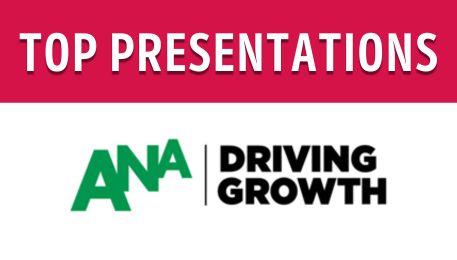

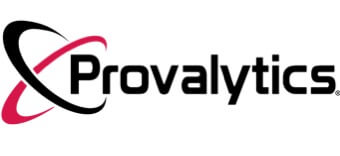
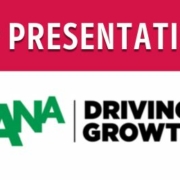
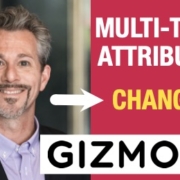
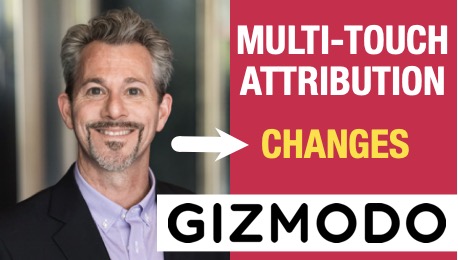
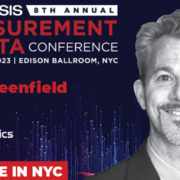
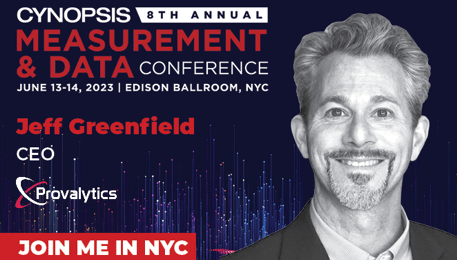
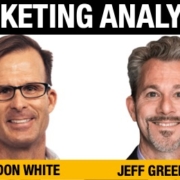
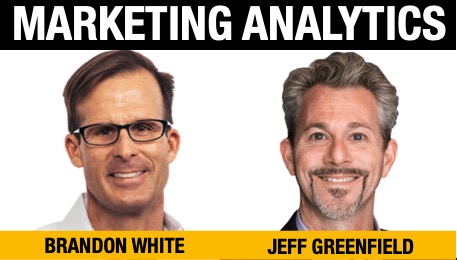

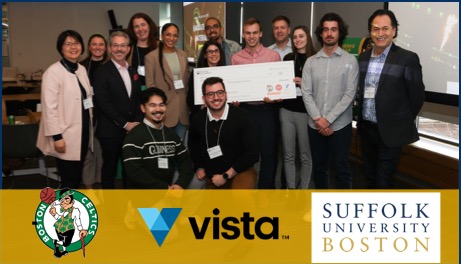
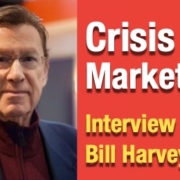

 In addition to his expertise in marketing and media, Bill Harvey is also an author of a book titled “
In addition to his expertise in marketing and media, Bill Harvey is also an author of a book titled “